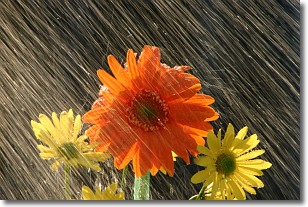Weather Alert in Oregon
Fire Weather Watch issued July 15 at 1:59PM PDT until July 17 at 10:00PM PDT by NWS Pendleton OR
AREAS AFFECTED: John Day Valley; Southern Blue Mountains; Warm Springs Reservation
DESCRIPTION: ...DRY AND WINDY CONDITIONS EXPECTED ACROSS CENTRAL OREGON ON THURSDAY... .An upper level system is expected to pass through the region on Thursday. This, combined with warm and dry conditions, will have the potential to create critical fire weather conditions. The National Weather Service in Pendleton has issued a Fire Weather Watch for wind and low relative humidity, which is in effect from Thursday afternoon through Thursday evening. * AFFECTED AREA...Fire Weather Zones 696 John Day Valley, 698 Southern Blue Mountains and 703 Warm Springs Reservation. * TIMING...From Thursday afternoon through Thursday evening. * WINDS...Northwest 10 to 15 mph. * RELATIVE HUMIDITY...As low as 10 percent. * IMPACTS...Any fire that develops will catch and spread quickly. Outdoor burning is not recommended.
INSTRUCTION: A Fire Weather Watch means that critical fire weather conditions are forecast to occur. Listen for later forecasts and possible Red Flag Warnings.
Want more detail? Get the Complete 7 Day and Night Detailed Forecast!
Current U.S. National Radar--Current
The Current National Weather Radar is shown below with a UTC Time (subtract 5 hours from UTC to get Eastern Time).

National Weather Forecast--Current
The Current National Weather Forecast and National Weather Map are shown below.

National Weather Forecast for Tomorrow
Tomorrow National Weather Forecast and Tomorrow National Weather Map are show below.

North America Water Vapor (Moisture)
This map shows recent moisture content over North America. Bright and colored areas show high moisture (ie, clouds); brown indicates very little moisture present; black indicates no moisture.

Weather Topic: What is Precipitation?
Home - Education - Precipitation - Precipitation
 Next Topic: Rain
Next Topic: Rain
Precipitation can refer to many different forms of water that
may fall from clouds. Precipitation occurs after a cloud has become saturated to
the point where its water particles are more dense than the air below the cloud.
In most cases, precipitation will reach the ground, but it is not uncommon for
precipitation to evaporate before it reaches the earth's surface.
When precipitation evaporates before it contacts the ground it is called Virga.
Graupel, hail, sleet, rain, drizzle, and snow are forms of precipitation, but fog
and mist are not considered precipitation because the water vapor which
constitutes them isn't dense enough to fall to the ground.
Next Topic: Rain
Weather Topic: What are Shelf Clouds?
Home - Education - Cloud Types - Shelf Clouds
 Next Topic: Sleet
Next Topic: Sleet
A shelf cloud is similar to a wall cloud, but forms at the front
of a storm cloud, instead of at the rear, where wall clouds form.
A shelf cloud is caused by a series of events set into motion by the advancing
storm; first, cool air settles along the ground where precipitation has just fallen.
As the cool air is brought in, the warmer air is displaced, and rises above it,
because it is less dense. When the warmer air reaches the bottom of the storm cloud,
it begins to cool again, and the resulting condensation is a visible shelf cloud.
Next Topic: Sleet
Current conditions powered by WeatherAPI.com




